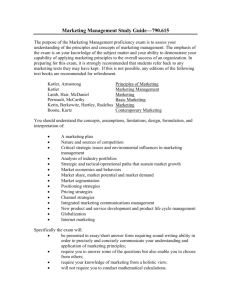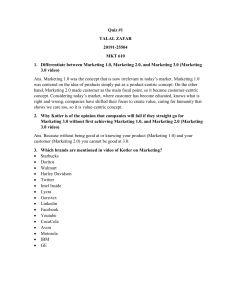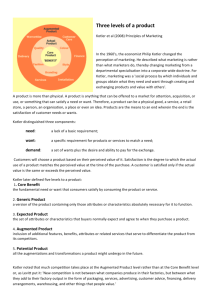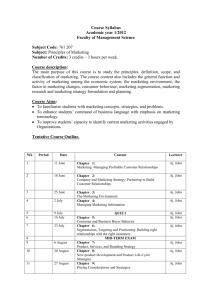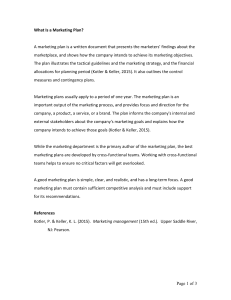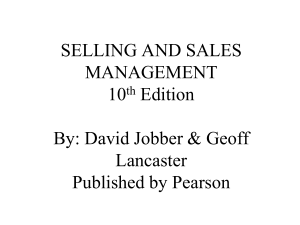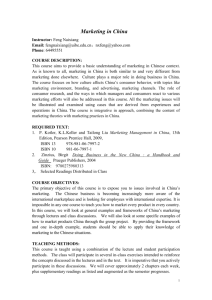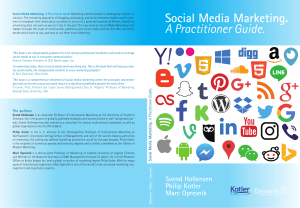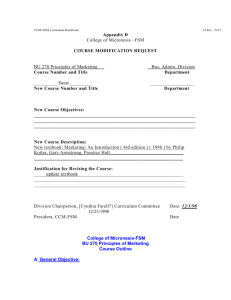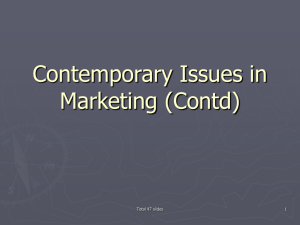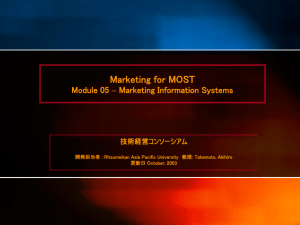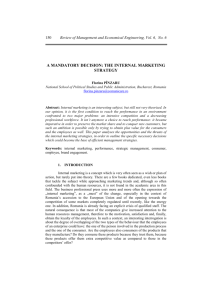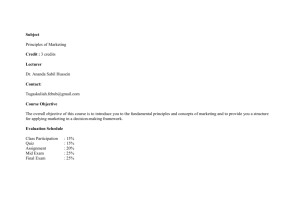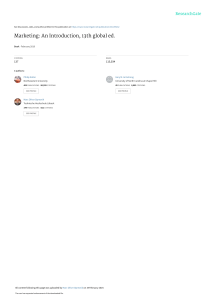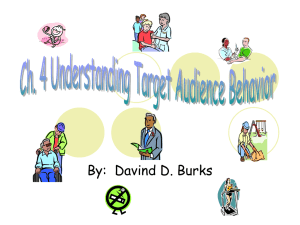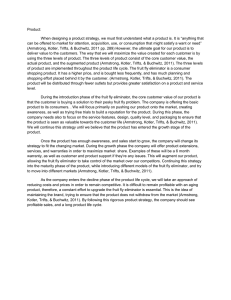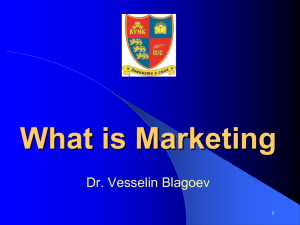kotler levels of product
advertisement
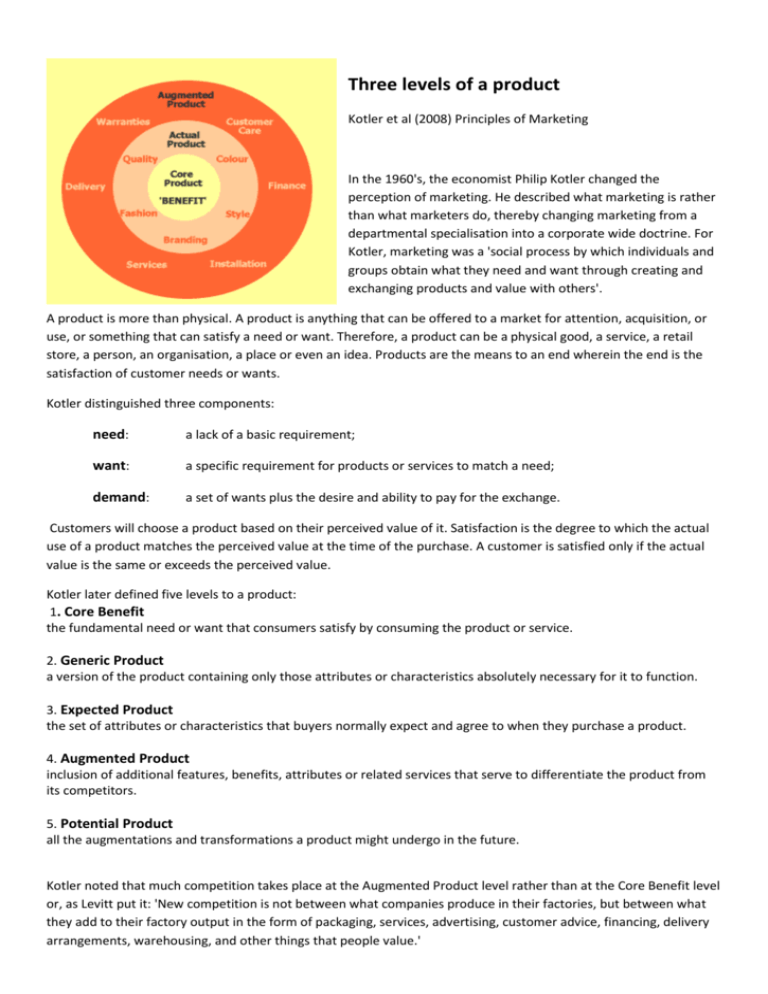
Three levels of a product Kotler et al (2008) Principles of Marketing In the 1960's, the economist Philip Kotler changed the perception of marketing. He described what marketing is rather than what marketers do, thereby changing marketing from a departmental specialisation into a corporate wide doctrine. For Kotler, marketing was a 'social process by which individuals and groups obtain what they need and want through creating and exchanging products and value with others'. A product is more than physical. A product is anything that can be offered to a market for attention, acquisition, or use, or something that can satisfy a need or want. Therefore, a product can be a physical good, a service, a retail store, a person, an organisation, a place or even an idea. Products are the means to an end wherein the end is the satisfaction of customer needs or wants. Kotler distinguished three components: need: a lack of a basic requirement; want: a specific requirement for products or services to match a need; demand: a set of wants plus the desire and ability to pay for the exchange. Customers will choose a product based on their perceived value of it. Satisfaction is the degree to which the actual use of a product matches the perceived value at the time of the purchase. A customer is satisfied only if the actual value is the same or exceeds the perceived value. Kotler later defined five levels to a product: 1. Core Benefit the fundamental need or want that consumers satisfy by consuming the product or service. 2. Generic Product a version of the product containing only those attributes or characteristics absolutely necessary for it to function. 3. Expected Product the set of attributes or characteristics that buyers normally expect and agree to when they purchase a product. 4. Augmented Product inclusion of additional features, benefits, attributes or related services that serve to differentiate the product from its competitors. 5. Potential Product all the augmentations and transformations a product might undergo in the future. Kotler noted that much competition takes place at the Augmented Product level rather than at the Core Benefit level or, as Levitt put it: 'New competition is not between what companies produce in their factories, but between what they add to their factory output in the form of packaging, services, advertising, customer advice, financing, delivery arrangements, warehousing, and other things that people value.' Kotler's model provides a tool to assess how the organisation and their customers view their relationship and which aspects create value. http://www.provenmodels.com/16
